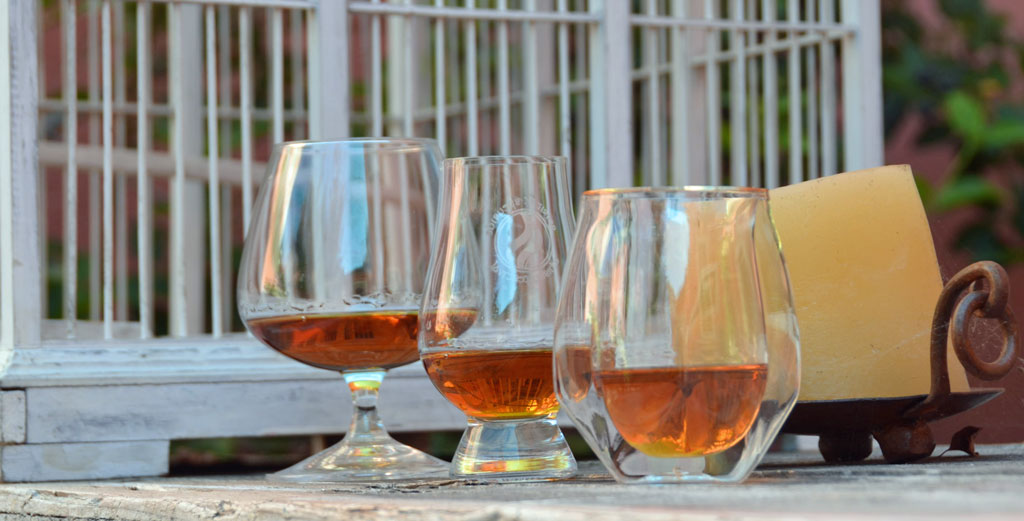Bulleit Bourbon Review
Updated March 31, 2019
By Richard Thomas
Average Rating:B-

(Credit: Richard Thomas)
I know what you must be thinking: “How can The Whiskey Reviewer just now be getting around to writing up Bulleit Bourbon!?” The whiskey is such a staple for so many that, admittedly, we should have done it long ago. All I can offer by way of explanation is that there are a lot of bottles to pluck out there.
The Bulleit story resembles that of so many of the independent bottlers and craft distilleries that have opened in recent years, in that Thomas E. Bulleit, Jr. was pursuing his dream of getting reviving the family whiskey tradition. Where it differs is in one very key point, namely when he did it. Bulleit started initial work in 1987, and began looking to build a company and brand in the mid-1990s. This was when the foundations of the bourbon revival were being laid, decades before the boom times.
The Bulleit brand passed to Seagrams in 1997, at which time the whiskey was sourced via Four Roses, then a Seagrams property. Diageo acquired Bulleit, but not Four Roses, in 2001 when it took a chunk of Seagrams’ wine and spirits holdings. Four Roses continued to provide whiskey under contract, made from a mashbill of 68% corn, 28% rye and 4% malted barley. That recipe is just heavy enough on the rye for most to consider Bulleit a high rye bourbon, if only just. Most, if not all, of the stock was matured in the warehouses of the shuttered Stitzel-Weller Distillery in Shively, Kentucky, a suburb of Louisville.
Fast forward to 2014, and Bulleit had become an important, fast growing, medium-sized brand. Four Roses, their main supplier, had gone from moribund to fan favorite status over roughly the same time frame, and decided they needed the capacity they were contracting out to Bulleit. Bulleit’s sourcing contract was allowed to expire, but since the juice in the bottles is thought to be averaging about six years old, it will continue to be predominately Four Roses-made until at least 2019.
The Bourbon
Bulleit Bourbon is bottled at a respectable 90 proof (45% ABV), which is no doubt a big part of its popularity. In the glass, the liquid has a light amber, copper coloring.
The nose smacks of oaky vanilla and a teaspoon’s worth of cinnamon, plus a light trace of charcoal that comes out if you take your time with it and let the liquid catch some air. The flavor is light on the sweetness relative to the traditional bourbon flavor profile, and balanced pretty evenly off a packet of cookie spices and dry wood.
The latter note is something about Bulleit that always catches my attention. Ryes sometimes tend to run a little dry, but this high rye bourbon brings more of the wood out than should be the case at this age. Basically, it’s woodier than I expect something like this to be, and I’m not past studying that aspect as I sip on it.
The finish is just spicy and dry enough to be a little rough, but only a little, the sort of thing that gives a bourbon character without denting its approachability. My take on Bulleit is that it, and not Basil Hayden, is what drinkers in search of a good, spicy bourbon should be buying. It’s stronger, more flavorful, still approachable, and a good bit cheaper (see below).
Addendum by Emily Mullis
Bulleit bourbon is an easy introduction to whiskey, especially compared to something like Knob Creek. Its medium amber coloring gives it an appealing look on the shelf and in your glass. Aside from the initial whiff of alcohol, Bulleit carries the aroma of sweet spices and oak. There’s a hint of vanilla in the taste, though it’s less sweet than what you would expect from a bourbon thanks to the higher rye content.
Because of that high rye content, Bulliet bourbon also has a dry finish and contributes some spicy notes, such as nutmeg. The finish has a fairly strong burn, but not enough to scare away a curious newcomer. A lot can be said about the finish of a whiskey and Bulleit bourbon does not leave the whiskey drinker in want. Overall, its a reasonably complex bourbon in that there is plenty to taste but also simple and easy for the less experience whiskey drinker
The Price
Another nice aspect of Bulleit is that it’s a nice puncher for its weight. A 750 ml bottle goes for around $25.



Kentucky burbon whiskey ??? but its made in IL
I think you mean Indiana (which is indeed the source of their Rye), but probably and unfortunately still wrong in any case. Bulleit was originally sourced through Four Roses, and still has a considerable amount of their stock on hand. A few years back, Four Roses stopped providing Bulleit with bourbon due to their own supply and demand issues. Where the whiskey that is taking up the slack until the in-house whiskey made at Bulleit’s new Shelbyville distillery is a mystery, but if they still call it Kentucky bourbon, it’s all made in Kentucky. Period.